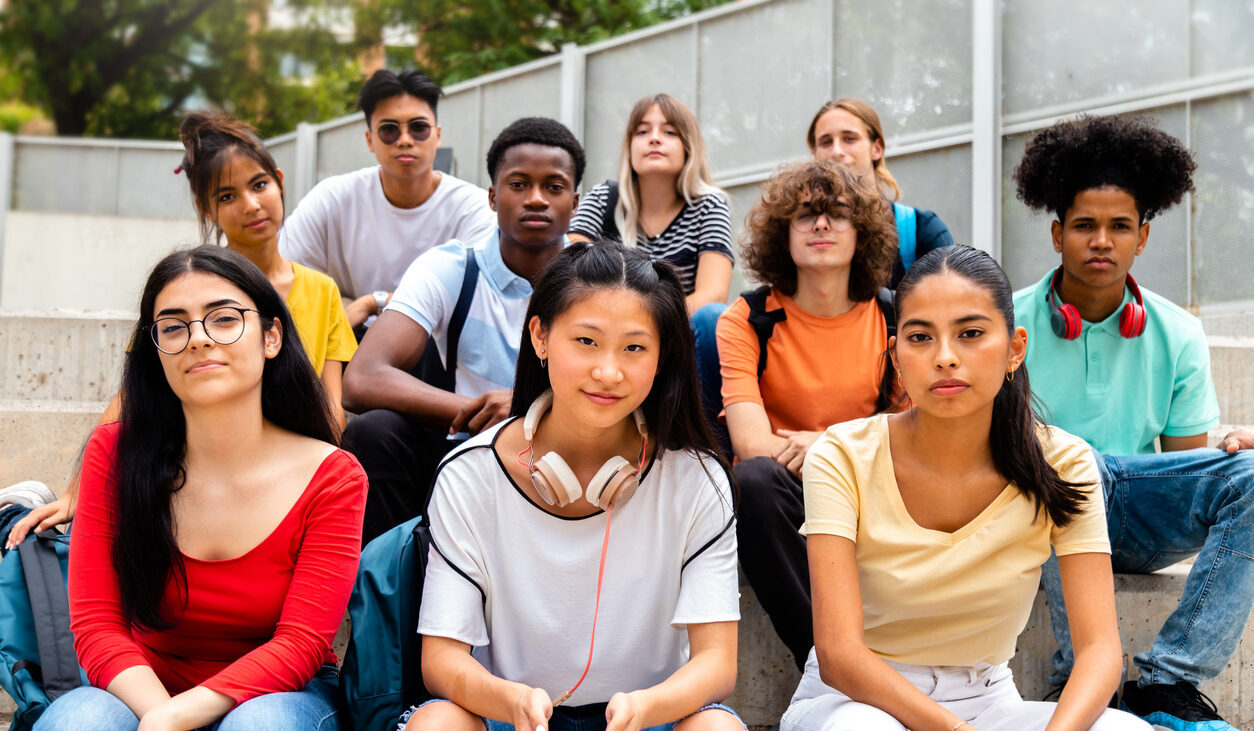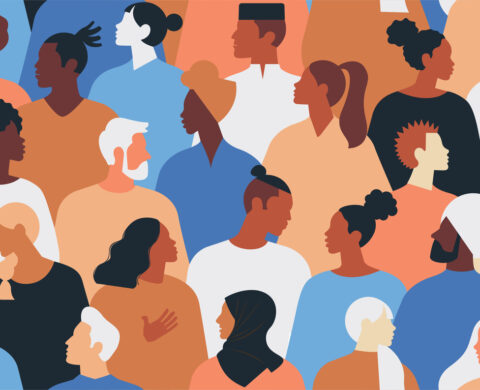How Can We Help the Next Generation Thrive?
By J. Nadine Gracia, M.D., MSCE, President and CEO
President John F. Kennedy once said that “children are the world’s most valuable resource and its best hope for the future.”
Our young people are the next leaders and changemakers of our country and the stewards of our planet. So, it’s critical to assess how well we as a nation are supporting their healthy development and what are the most effective evidence-based strategies government, schools, the health sector, and community organizations can implement to support youth and families.
The challenges young people face have evolved. To name a few: social media, cyber bullying, experiencing and/or witnessing violence, including school shootings, are among many stressors that are leading more young people to feel isolated, anxious, and depressed. Climate change was a nascent threat in previous generations, but its effects are fully evident today. All Americans are experiencing weather-related disasters that are more frequent and more intense. There is an increase in the prevalence of certain chronic diseases among youth, including obesity and Type 2 diabetes. The effects of intergenerational poverty, structural racism, and discrimination still negatively impact the health, well-being, and opportunity of millions of young people. This is particularly true for young people who are marginalized, contributing to housing and food insecurity, lack of access to quality education and healthcare, and leading them to grow up in under-resourced neighborhoods. Furthermore, a recent study documented that youth aged 0-19 in the U.S. die at a higher rate than their counterparts in 16 other high-income countries.
Public health systems are well positioned to help communities face these challenges. U.S. Surgeon General Dr. Vivek H. Murthy, for example, has highlighted the role public health can play — in partnership with schools, social services, community-based organizations, and other sectors — to promote and protect the mental health of youth.
If we take the time to understand the barriers young people face, this country can lay the foundation for a better tomorrow.
What We Learned from the COVID-19 Pandemic
This generation of children and adolescents is coming of age following the deadliest global pandemic in a century. The long-term impact of the COVID-19 public health emergency is still being analyzed and understood, but it has undoubtedly already had a profound effect on young people.
Government actions during the pandemic to mitigate economic stressors successfully increased the number of families with children with health insurance and reduced child poverty to a record low. It was a manifestation of how sound, evidence-based public policy can positively impact the hardships that many individuals and families face. But many of those policies have ended, and as a result, there is now a record rise in child poverty. In addition, the unwinding of the continuous enrollment provision under Medicaid and the expiration of temporary emergency allotments of the Supplemental Nutrition Assistance Program are leaving many individuals and families with less access to healthcare and increased food insecurity.
Already troubling trends for youth mental health prior to the pandemic have seemingly worsened in the years following the start of the outbreak. One study estimated that over 200,000 children in the U.S. lost a parent or primary caregiver to COVID-19. Emergency department visits for suspected suicide attempts for adolescents ages 12-17 rose dramatically between 2019 and 2021. The study found a significant increase in suicide attempts among adolescent girls. Furthermore, the percentage of high school students who experienced persistent feelings of sadness increased in 2021, continuing a more than decade-long trend of concerning mental health status among our nation’s youth.
The pandemic has also led to a troubling uptick in vaccine skepticism, causing many children to experience needless suffering. While overall vaccine coverage for children remains high, parents opting their kids out of state-required vaccines exceeded 5% in 10 states, according to the Centers for Disease Control and Prevention (CDC). Exemptions above 5% increase the risk of outbreaks from vaccine-preventable diseases like measles.
While the challenges are alarming, young people are showing resilience in the face of unprecedented social change. Adolescent substance use declined significantly between 2020 and 2021 and has held below pre-pandemic levels in subsequent years. In fact, youth drug use has been declining since 2011, though there has been a rise in more powerful and lethal drugs. Climate change has emerged as a top priority or concern for young people, driving many young people to emerge as leaders in the movement for climate action and to advocate for policy changes to create cleaner and more sustainable communities.
That resilience should be a lesson to all of us – to not simply describe and document the risks or disparities young people face, but to also importantly lift up their strengths and advance solutions that promote health and well-being. In fact, an emerging cadre of researchers and youth development experts are calling for a more strength-based approach to understanding and improving conditions for young people, giving them the skills and opportunities to thrive.
Policy and Practice Solutions
So how can policymakers help improve community conditions for young people? Some key policy and practice solutions include:
- Pass the Improving Social Determinants of Health Act and expand funding for the Social Determinants of Health program at CDC to fund meaningful, multisector partnerships between public health and partners that address economic opportunity, housing, education, transportation, access to nutritious foods, and other drivers of health.
- Enact policies that support families, such as strengthening the child tax credit and ensuring access to affordable health insurance and paid family and sick leave.
- Improve food and nutrition security, while also increasing access to healthy foods, by expanding eligibility to the Special Supplemental Nutrition Program for Women, Infants, and Children (WIC), extending benefits and access to the Supplemental Nutrition Assistance Program (SNAP), and providing healthy school meals for all children.
- Reject state laws that would limit access to vaccines and invest in vaccine equity, outreach, and access through CDC’s Immunization Program.
- Improve care and connectedness for students by boosting Medicaid reimbursement for mental health services in schools and increasing funding for the CDC Division of Adolescent and School Health’s efforts to create safe and supportive environments.
- Support the Preventing Adverse Childhood Experience (PACE) Act which would help fund prevention programs across the country and expand new research into the long-term impact of childhood trauma that includes a diverse, nationally representative sample and considers social, economic, and community conditions.
- Expand strategies for addressing racial and ethnic disparitiesin youth mental health outcomes, such as expanding and diversifying the pediatric behavioral health workforce, increasing access to culturally and linguistically appropriate care, and raising Medicaid reimbursement for related services.
- Create opportunities for accessible transportation and safe places to be physically active through policies like Complete Streets and Safe Routes to Schools.
- Promote the physical and mental health benefits of youth sports participation. The President’s Council on Sports, Fitness & Nutrition recently partnered with major sports leagues and players associations to expand access to physical activity and promote healthy lifestyles across the nation.
Any and all strategies and recommendations should prioritize health equity to end structural and systemic barriers to health, well-being, and opportunity. These solutions are within our reach. We can lay the foundation for a sustainable future that will help all young people thrive.



